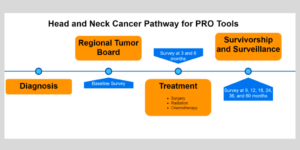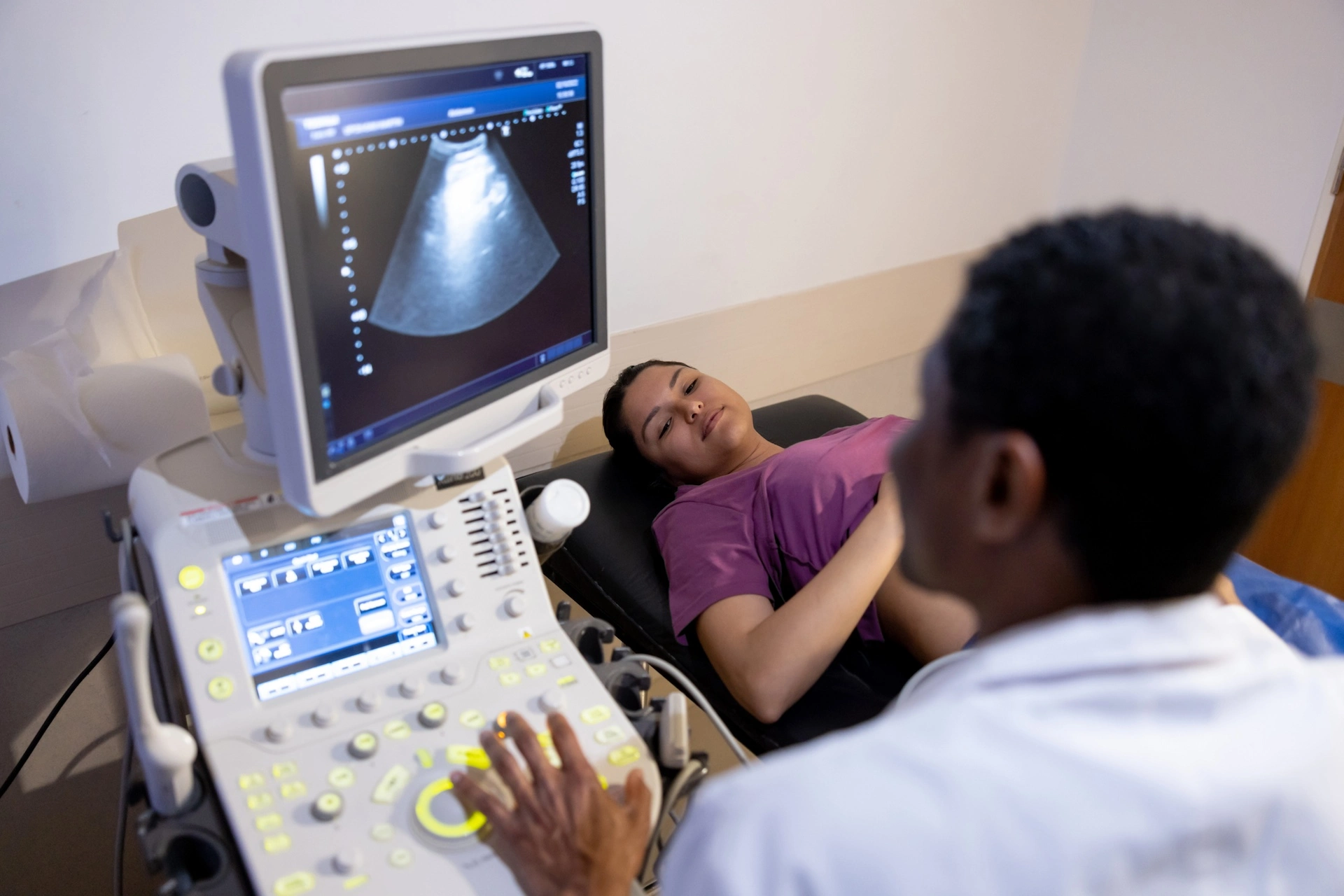Kaiser Permanente study shows tools routinely used in clinical trials can be integrated into electronic medical records
Patient-reported outcome surveys that are integrated into an electronic medical record can help oncology care teams quickly address the treatment-related symptoms and side effects head and neck cancer patients experience, a new Kaiser Permanent study shows.

The paper, published August 18 in JCO Clinical Cancer Informatics, presents findings from a pilot study implemented by oncologists at Kaiser Permanente Northern California.
“This study is really exciting because it shows that we can use patient-reported outcomes tools for cancer patients in our electronic medical record at Kaiser Permanente,” said the study’s senior author Jed A. Katzel, MD, an oncologist with The Permanente Medical Group. “Previous research has shown that these tools can benefit patients, but they have been difficult for many hospital systems to implement.”
The study, a retrospective review, included 120 patients who were treated for head and neck cancer between August 2017 and December 2019. Patients were asked to complete a patient-reported outcome survey that addressed a range of potential symptoms and side effects when they started treatment, and up to 8 subsequent surveys were emailed every 3 months. The study showed that between 92% and 100% of patients responded to each survey. Additional analyses found that 100% of Asian American patients, 97% of white patients, and 90% of Hispanic/Latinx patients responded to at least 1 survey. Overall, 78% of patients had 0 or 1 hospitalization during treatment, while 23% had more than 1 hospitalization.
By having patients respond directly, it eliminates potential miscommunication between a patient and their provider.
—Stephanie Ossowski, MD, MPH, oncology fellow, The Permanente Medical Group
Most head and neck cancer patients are treated with surgery, radiation, and chemotherapy. These treatments can cause side effects such as loss of appetite, problems chewing or swallowing, and decreased thyroid gland function along with pain, nausea, fatigue, and mouth sores. Prompt symptom management can improve a patient’s short- and long-term quality of life, Katzel said. It can also reduce hospitalization and emergency room visits during cancer treatment.
 Cancer clinical trials routinely use patient-reported outcome tools to assess symptoms and side effects of cancer treatments and provide symptom management. However, many hospital systems have reported difficulty incorporating these tools into their routine care. Kaiser Permanente Northern California conducted the pilot study to see if tools developed specifically for patients with head and neck cancer could be successfully integrated into their electronic medical record system.
Cancer clinical trials routinely use patient-reported outcome tools to assess symptoms and side effects of cancer treatments and provide symptom management. However, many hospital systems have reported difficulty incorporating these tools into their routine care. Kaiser Permanente Northern California conducted the pilot study to see if tools developed specifically for patients with head and neck cancer could be successfully integrated into their electronic medical record system.
“Initially, what made me interested in patient-reported outcome tools were the studies that showed they could improve outcomes and survival,” said the study’s lead author Stephanie Ossowski, MD, MPH, an oncology fellow with The Permanente Medical Group. “Our research shows that head and neck cancer patients respond well to the tool and that it could be easily implemented into our care. By having patients respond directly, it eliminates potential miscommunication between a patient and their provider.”

For the pilot study, the head and neck cancer patients with access to Kaiser Permanente’s provider-patient messaging system received emails that linked to the online surveys. These surveys could be completed online or with an oncology medical assistant over the phone or in person. The medical assistant contacted the patients in the study who did not use the messaging system and offered interpreters if necessary.
Throughout the study, the patients’ survey responses were reviewed by the oncology medical assistants. They used a predetermined care pathway to contact the most appropriate cancer care team member to address a patient’s symptoms. The team included physicians, nurses, palliative care specialists, social workers, dietitians, and other cancer care specialists.
Katzel emphasized that the high response rate seen in the study would not have been possible without the medical assistants. “Two of our co-authors are the medical assistants who worked with our patients,” he said. “The study showed that the tool could be integrated into the electronic health record, but to address patient barriers you need dedicated staff.”
The Permanente Medical Group’s Delivery Science and Applied Research program has provided support for Katzel to expand upon this research. He and Stephen Van Den Eeden, PhD, a senior research scientist at the Kaiser Permanente Division of Research, are currently investigating whether weekly patient-reported outcome surveys improve symptom management for head and neck cancer patients during radiation therapy.
“This partnership is allowing us to build on what we have learned during the implementation process for head and neck cancer patients to expand the use of patient-reported outcomes tools to help address patient symptoms quickly and systematically,” said Katzel. “We hope that these studies will help us to continue our work in bringing these tools to patients with other types of cancer.”
Co-authors include Douglas Stram, MSc, of the Division of Research; Lisa Piazza and Amy Kammerer of The Permanente Medical Group; and Ethan Basch, MD, MSc, of the University of North Carolina.
# # #
About the Kaiser Permanente Division of Research
The Kaiser Permanente Division of Research conducts, publishes and disseminates epidemiologic and health services research to improve the health and medical care of Kaiser Permanente members and society at large. It seeks to understand the determinants of illness and well-being, and to improve the quality and cost-effectiveness of health care. Currently, DOR’s 600-plus staff is working on more than 450 epidemiological and health services research projects. For more information, visit divisionofresearch.kaiserpermanente.org or follow us @KPDOR.





This Post Has 0 Comments